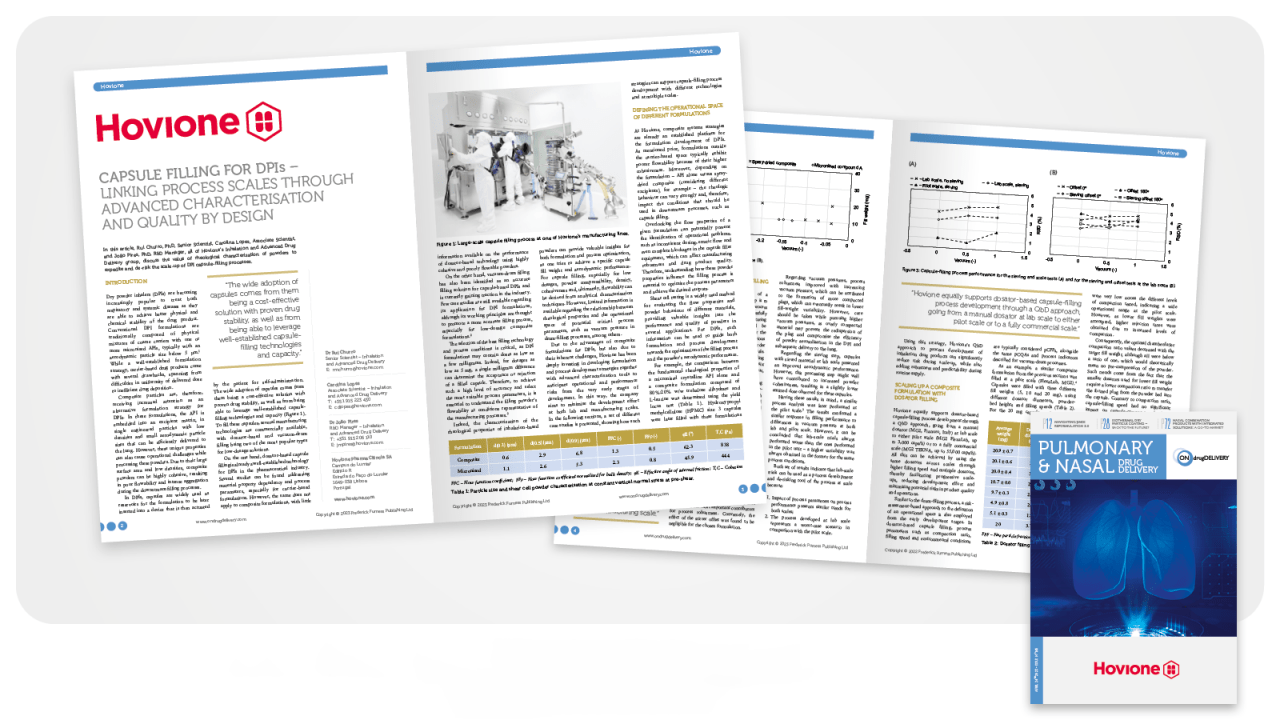Press Room
Capsule filling for DPIs - Linking Process scales through advanced characterisation and Quality by Design
ONDrugDelivery, 28 April 2023

In this article, Rui Churro, PhD, Senior Scientist, Carolina Lopes, Associate Scientist, and João Pires, PhD, R&D Manager, all of Hovione’s Inhalation and Advanced Drug Delivery group, discuss the value of rheological characterisation of powders to expedite and de-risk the scale-up of DPI capsule-filling processes.
Composite particles are gaining traction as an alternative formulation strategy for dry powder inhalers. Typically, these engineered particles present low densities and small aerodynamic particle size, promoting an effective delivery to the lung. However, these unique properties can also raise operational challenges, such as poor flowability and powder agglomeration, during downstream filling processes. Since dry powder inhalers may contain doses as low as few milligrams, it is essential to understand the rheologic properties of the filled powders and select the best filling technology/conditions towards reaching the required filling accuracy.
Hovione has been deeply investing in developing formulation/process development strategies together with... Read more
